| CRAGSIDE NORTHUMBERLAND |

| Cragside the house and its estate was the ancestral home of the Armstrong family. Lord Armstrong was an innovator who created his wealth from ordnance and heavy engineering industry. The engineering was concentrated on mechantile and hydraulics. Cragside the house was built over the period 1870 - 1885 including the many extensions, improvements and upgrading occuring during that period. The house and estate became the property of The National Trust in 1977 and was opened to the public for the first time in 1979. |
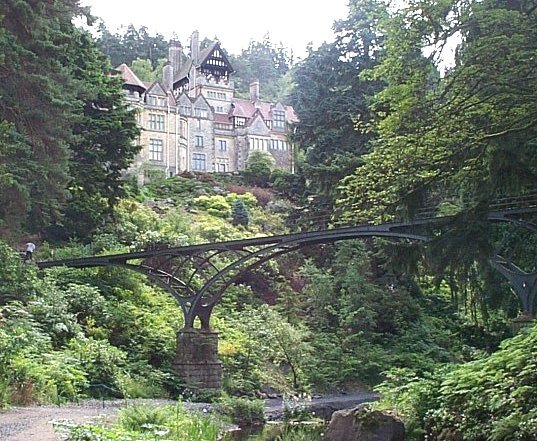 |
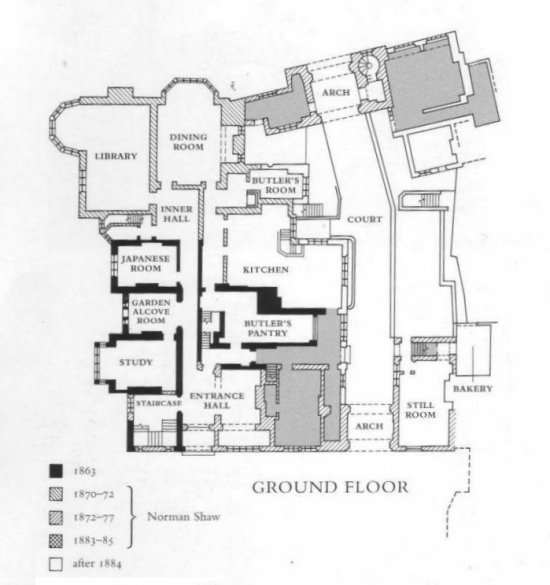
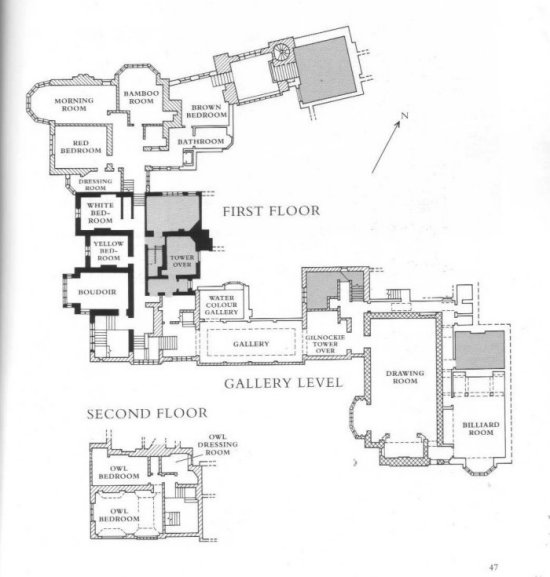
|
Cragside
house is
heated by two different types of central heating
system.
Firstly,
many
of the rooms in
the original part of the house (1863 - 1872) are
heated by a warm air
ventilation system which warmed that part of the
building through a
network of ducts, all of which appear to have been
built into the
structural fabric of the building.
Two large rooms sited in the basement of the house are filled with banks of 4 inch cast iron heating pipes arranged in multiple rows, which acted as plenum heating chambers to warm and raise the temperature of the incoming cold fresh air before it entered the ventilation system. 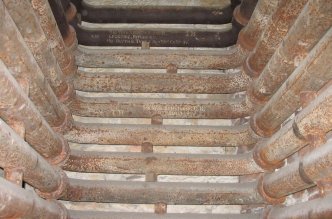
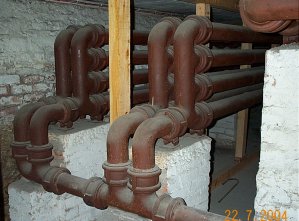 Pipe Bank No 1 Pipe Bank No 2 Most
of
the rooms
heated by the warm air ventilation system are fitted
with floor
gratings arranged around the perimeter of the room.
Other rooms have
the gratings or grilles fitted in the floor outside
the entrance door
or in the skirtings.
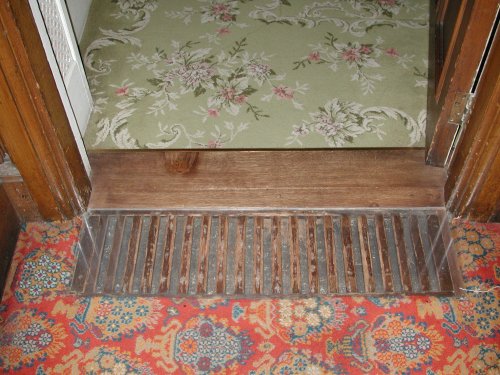
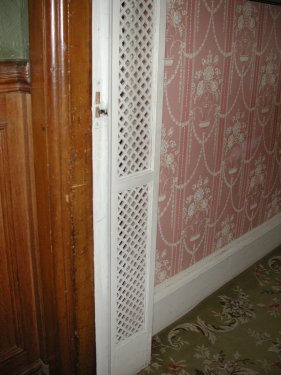
|
| Secondly,
the
later
built sections of the house (1872 - 1885) are heated
by a low pressure
wet heating system. Rooms, Staircase, Landings and
Corridors are heated
by a variety of different shapes and sizes of
Victorian style box-ended
pipe coil heaters, and also "Princess" sectional
pattern radiators
manufactured by The Beeston Boiler Co. Unfortunately all the pipe coil heaters and radiators are enclosed in decorative timber enclosures with only the front screen sections being removable. This made photographing the heaters difficult as can be seen from the images shown later. No indication of the maker's names was found on any of the heaters, so there is a possibility that these cast iron heaters could have been cast and made in one of the many manufactories of Armstrong. One possible exception to this was the circular vertical pattern heater found in the Water Colour Gallery. This heater appears to be of a similar design to types made by Cannon or William Graham both of London. This is the first example of this circular pattern to be found in a National Trust property and must be considered a great rarity. |
| Boiler
Plant, serving the
heating installation is of recent manufacture
and therefore not shown,
as it did not
form part of the survey of the historical
engineering services. |
DETAILS OF PIPE COIL
HEATERS AND RADIATORS

|
Bottom of Main
Staircase
5
tier 5
row pipe coil heater, with bottom
fed
cast iron flow & return pipes.
The top of each pipe bank was fitted with an air vent pipe connected into a header pipe with a single vent outlet. |

|
First
Floor Landing
4
tier treble
row pipe coil heater with
rectangular box-end headers. Right hand TBSE flow & return pipe connections. 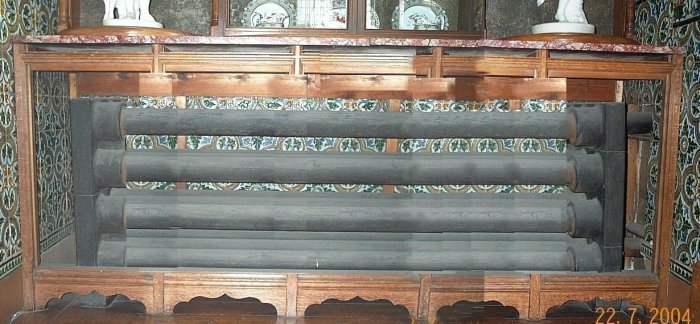 |
|
Water
Colour Gallery
8
Section vertical circular pattern heater
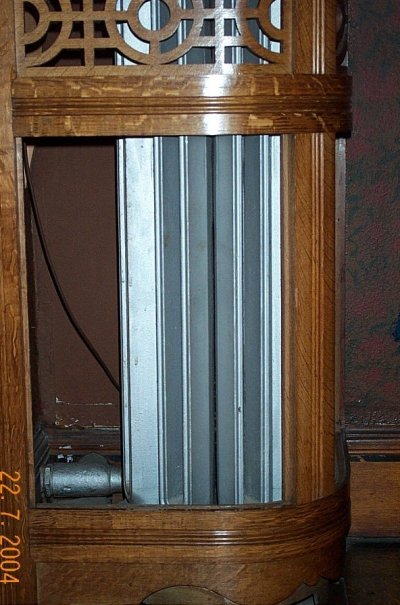 |
|
Billiard
Room
12 Section cast iron vertical pattern with diamond cross-sectional waterways. Radiator is floor standing type with decorative claw shaped feet. 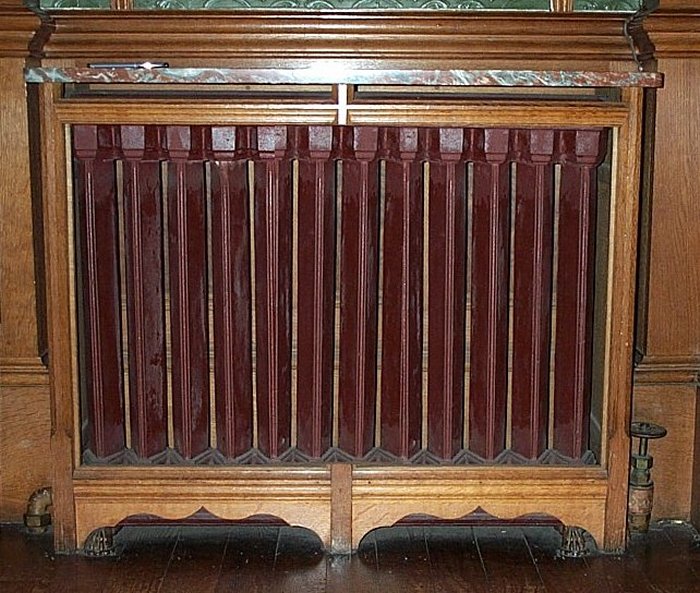 |
|
Gun
Room Corridor
6 tier double row horizontal pipe coil heater with rectangular box-end headers. Right hand bottom flow & return pipe connections. |

| KITCHEN |
Several interesting items of engineering were
found in the ground floor Kitchen
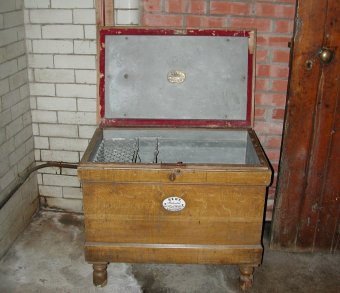 |
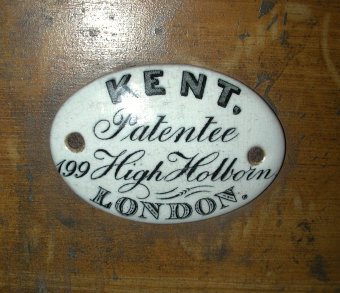 |
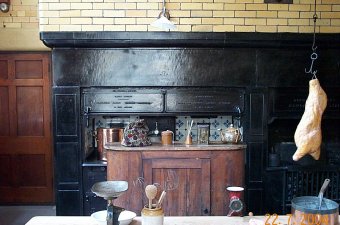 |
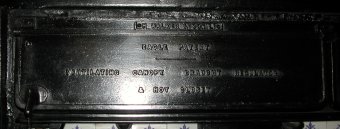 |
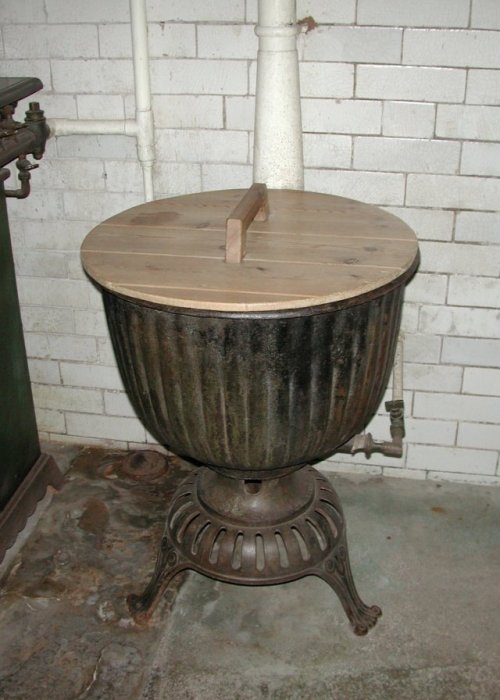 |
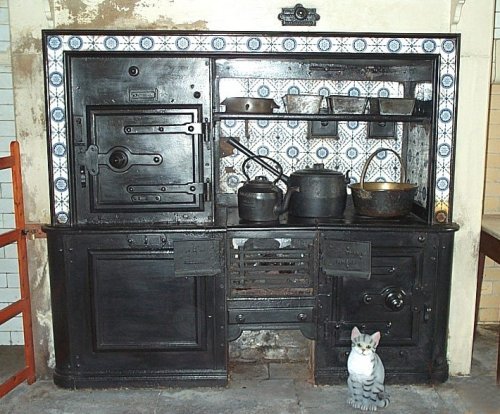 |
| Electricity
at Cragside |
|
The
following
description is an
edited version of The National Trust leaflet which
gives an
overview of the history of the electricity supply
at Cragside.
Armstrong had a lifelong interest in electricity
and combined this
interest with hydraulics to create probably the
very first
hydroelectric
power house to be installed, at Cragside
circa.1868.
PHASE 1 A
dam was built by
Armstrong to provide stored water which was then
fed by gravity into a
header tank sited on the roof of the power house
building.
|
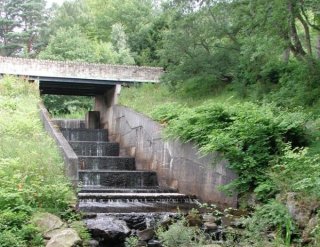 |
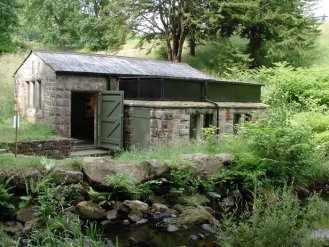 |
|
The
hydraulic
pump has a twin head arrangement which pumped
the water up to
a reservoir 200 feet above the house. This
stored water was then fed by
gravity into the house to be used for domestic
purposes, the hydraulic
lift, kitchen spit and laundry equipment.
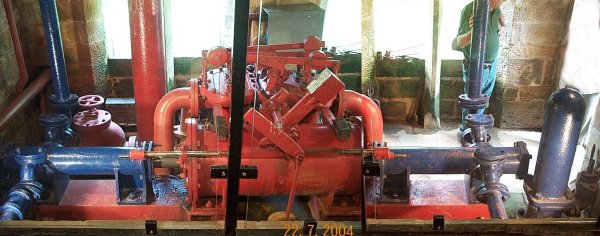 Also in the Power House building in 1878 Armstrong located a 6hp turbine which was used to drive a dynamo generating electricity for the newly installed carbon rod arc lamps lighting the Picture Gallery in the house. The dynamo was a Siemens series wound, bipolar horizontal pattern with a drum armature and single magnetic circuit. PHASE 2 Due to the increased demand for electricity the Burnfoot Power House was constructed in 1886 to house a Gilkes turbine and Crompton generator. 45 new lamps had been installed in the house, which were of the incandescent design type perfected by Joseph_Swan. The turbine was powered from Nelly's Moss Lakes located approx 104 metres (340feet) above the Power House creating a pressure of 150 psi at the turbine. The electricity supply was taken from the generator on ceramic conductors and then routed up to the house by cable housed in a buried wooden conduit supported on trestles.  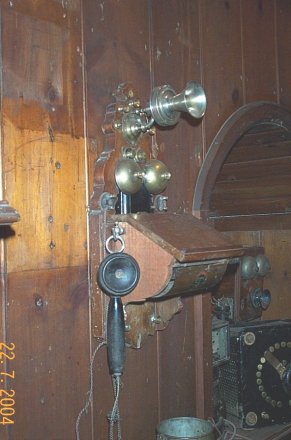 The Power House needed to be manned at all times by a person aptly named 'caretaker of the electric light'. A telephone was provided to enable him to be in direct contact with the house. PHASE 3 Demand
continued to
increase in the house for electricity to such an
extent that by 1895
two extensions to the Burnfoot Power House were
added by
Armstrong. These extensions comprised a
Battery House and a Gas
Engine House. A second generator was also
added to the
installation, a Thomas Parker dynamo installed
by Drake & Gorham of
London. To maintain power supplies at
times of peak
demand a set of batteries was also added and
most probably they were
connected to and charged
directly by one of the generators.
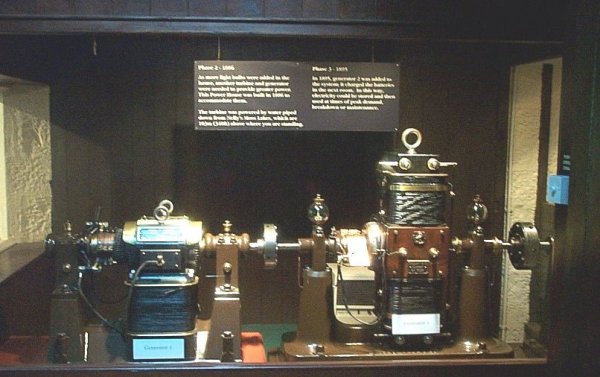 During periods of dry weather the water supply from Nelly's Moss lakes became unreliable so it was considered necessary for a gas engine to be installed that could then be used to drive either or both generators. The gas engine was a 30-hp Tangye horizontal single cylinder pattern. The nearby town of Rothbury had a town's gas works founded by Armstrong, where the gas was piped to the estate and used to drive the engine. The 'caretaker of the electric light' was required to notify the Gas works before starting the gas engine. Cragside was connected to mains electricity in 1945. |
The following items are a selection of newspaper articles
from the 1970's about the Cragside House and estate.
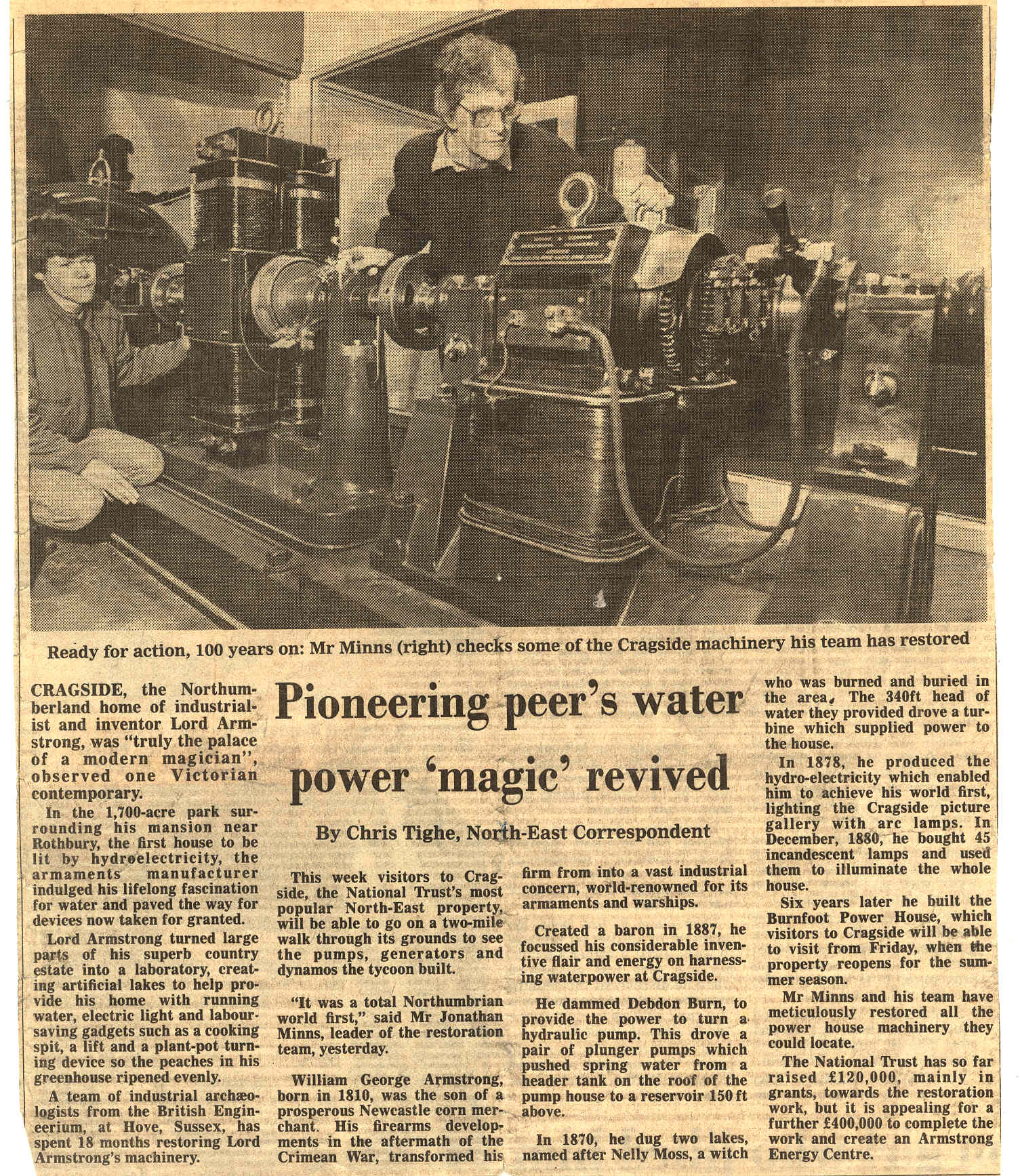
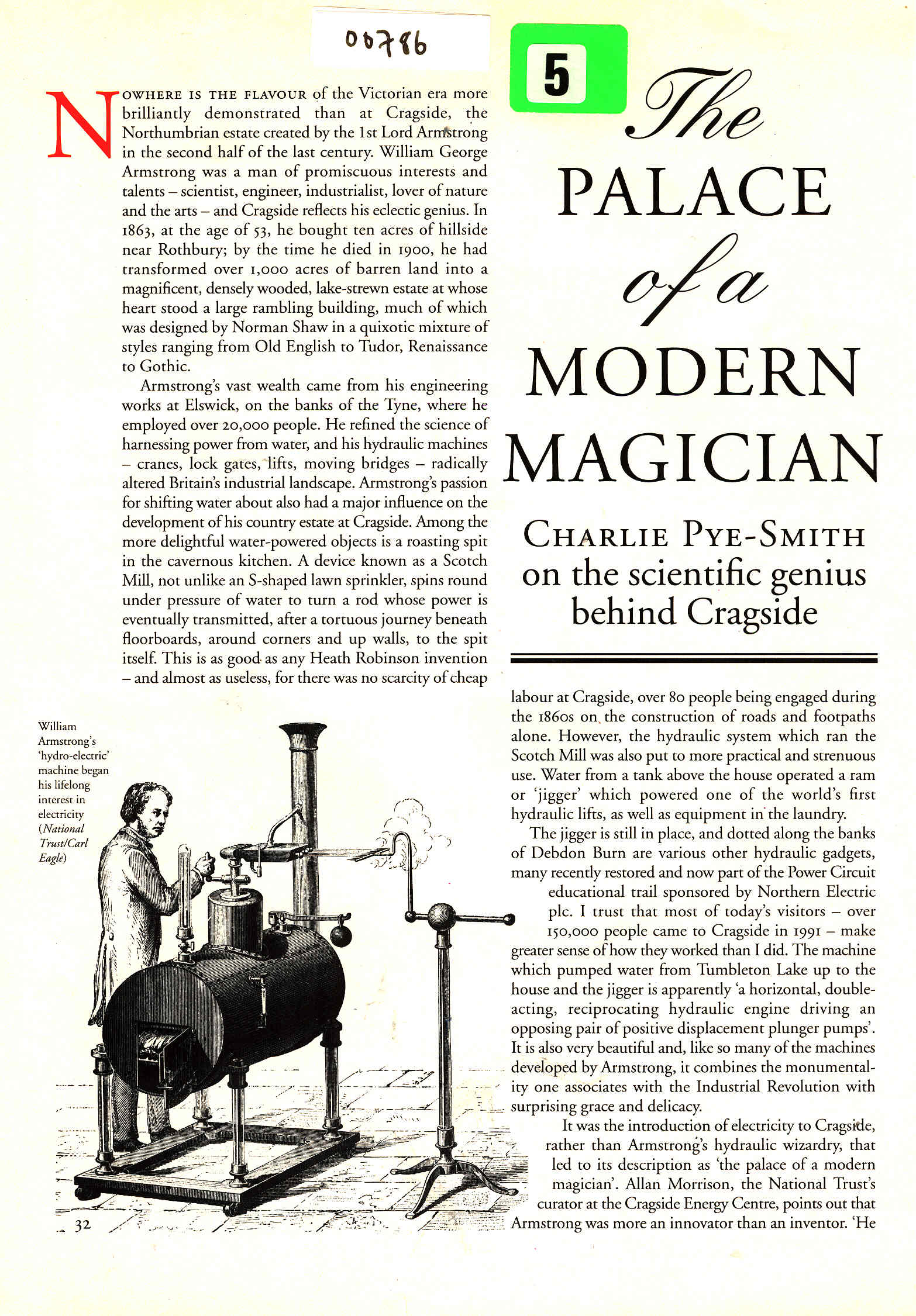
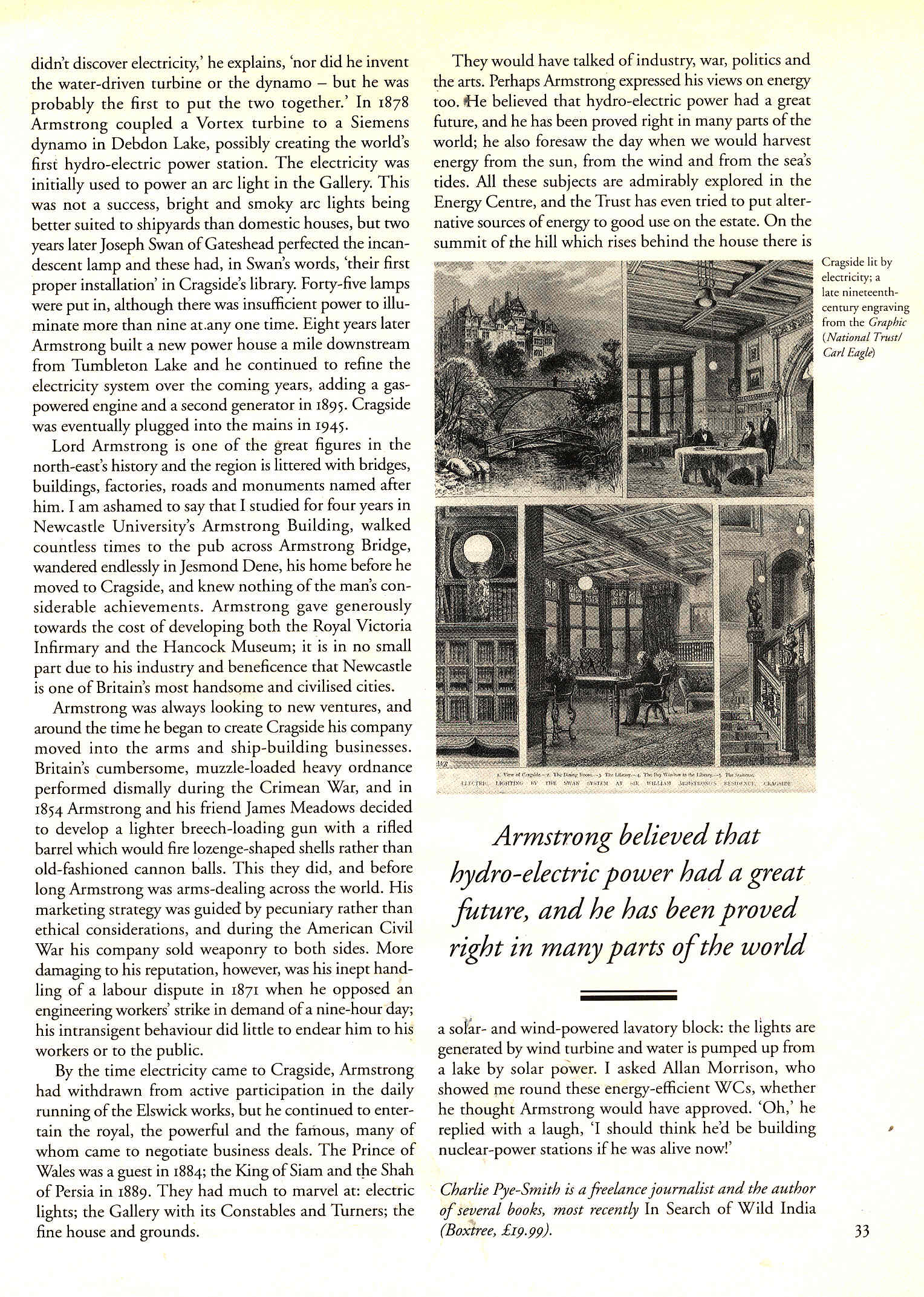
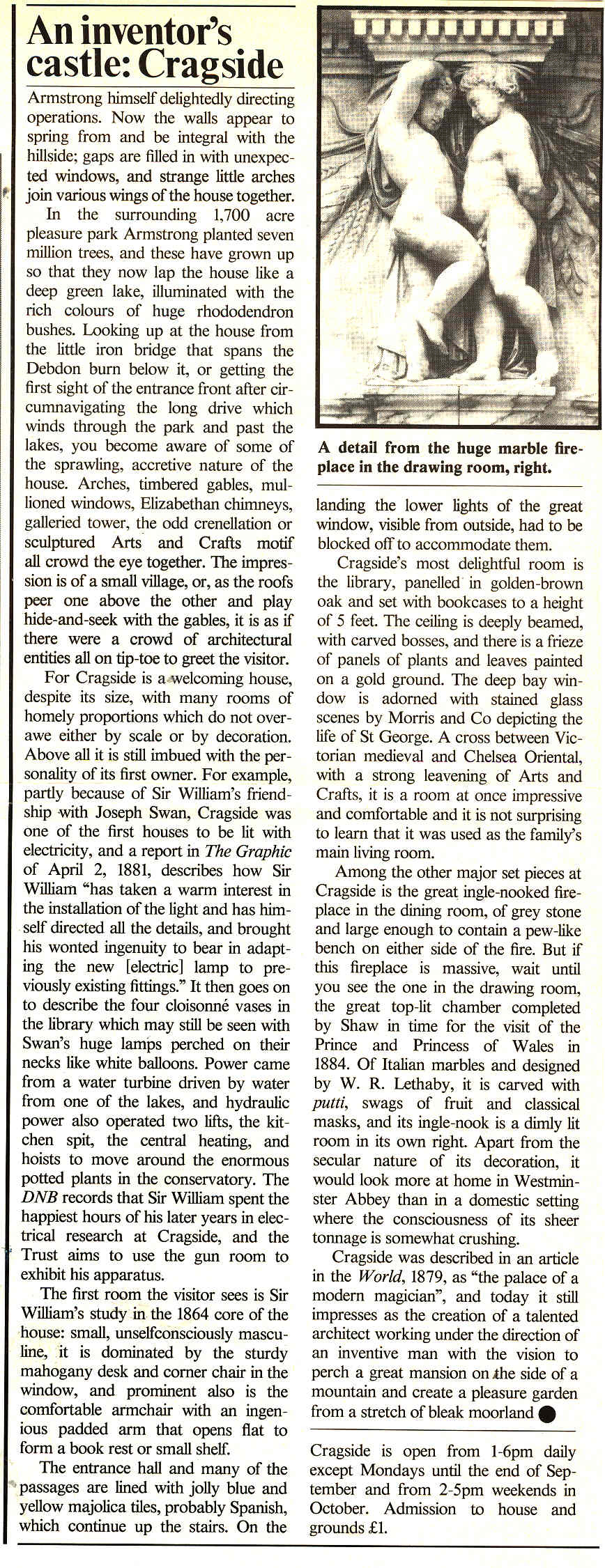
AUGUST 2004


